Evidence of Evolution
advertisement
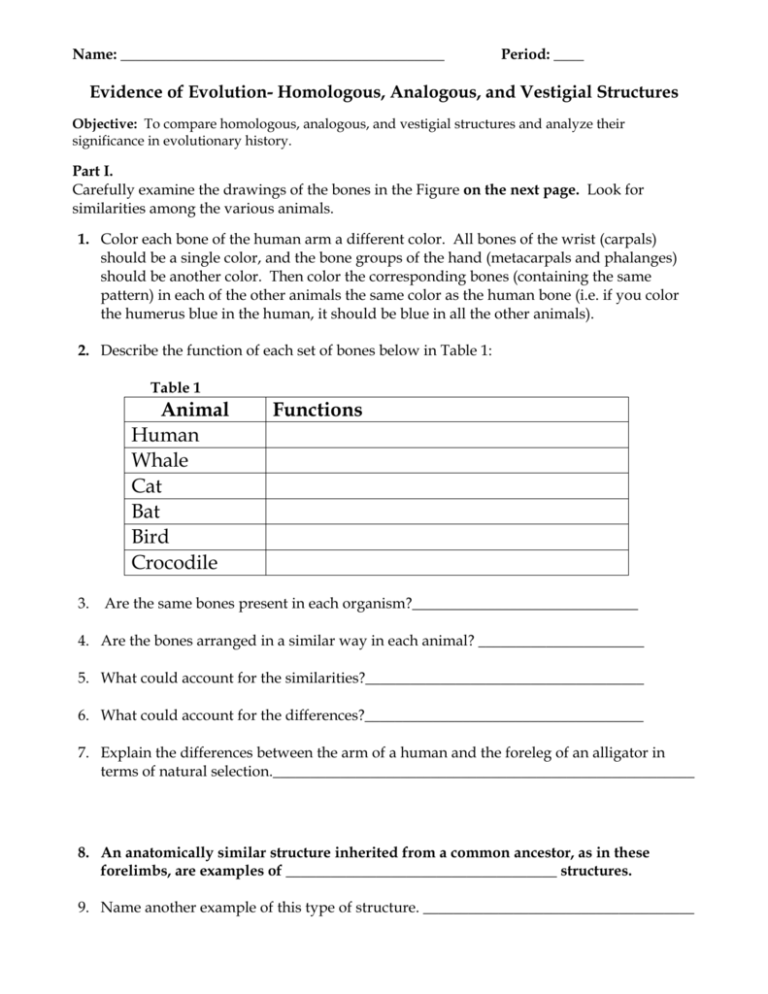
Name: ___________________________________________ Period: ____ Evidence of Evolution- Homologous, Analogous, and Vestigial Structures Objective: To compare homologous, analogous, and vestigial structures and analyze their significance in evolutionary history. Part I. Carefully examine the drawings of the bones in the Figure on the next page. Look for similarities among the various animals. 1. Color each bone of the human arm a different color. All bones of the wrist (carpals) should be a single color, and the bone groups of the hand (metacarpals and phalanges) should be another color. Then color the corresponding bones (containing the same pattern) in each of the other animals the same color as the human bone (i.e. if you color the humerus blue in the human, it should be blue in all the other animals). 2. Describe the function of each set of bones below in Table 1: Table 1 Animal Human Whale Cat Bat Bird Crocodile 3. Functions Are the same bones present in each organism?______________________________ 4. Are the bones arranged in a similar way in each animal? ______________________ 5. What could account for the similarities?_____________________________________ 6. What could account for the differences?_____________________________________ 7. Explain the differences between the arm of a human and the foreleg of an alligator in terms of natural selection.________________________________________________________ 8. An anatomically similar structure inherited from a common ancestor, as in these forelimbs, are examples of ____________________________________ structures. 9. Name another example of this type of structure. ____________________________________ Part II. Examine the butterfly wing and the bird wing shown in Figure 2. 10. What function do these structures share? ____________________________________________ 11. How do the structures differ? ______________________________________________________ ___________________________________________________________________ ___________________________________________________________________ ________________________________ 12. Do birds and insects share any structural similarities that would suggest they are closely related? Explain. ___________________________________________________________________ _______________ 13. Structures with similar functions, but different constructions, and were not inherited from a common ancestor are ____________________________________________________ structures. Part III. Gradual changes have occurred through time that have, in some cases, reduced or removed the function of some body structures and organs. The human appendix that is reduced and no longer digests rough vegetation and pelvic bones of snakes that have no legs are examples of this phenomenon. The cave fish and minnow shown in Figure 3 are related, but the cave fish is blind. 14. Explain why eyesight is not an important adaptation to life in a cave. ____________________________________________________________ ____________________________________________________________ 15. Does the appearance of the cave fish and minnow suggest common ancestry? Explain. ____________________________________________________________ ___________________________________________________________________ 16. Organs or structures that have lost their function in the organism and become reduces in size are called________________________ Structures. 17. Humans also have these kinds of structures. On the table below suggest a possible function for each structure and reason why it may have become vestigial. Use the handout labeled CLASS COPY to complete the table. Table 2 Structure Appendix Muscles that make hair stand up Coccyx (tail bone) Muscles that move ears Wisdom teeth Possible Function(s) Why it is considered vestigial
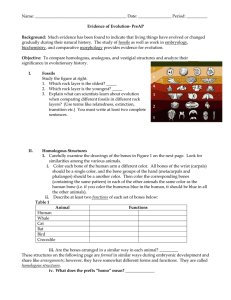
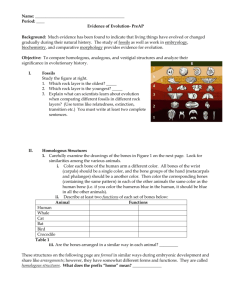
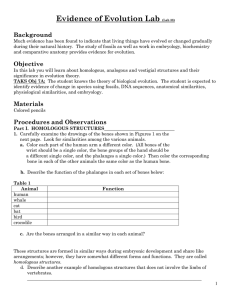
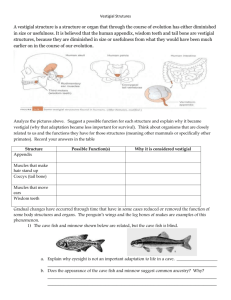
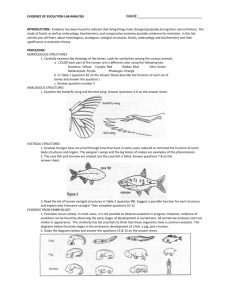
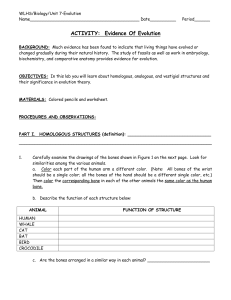
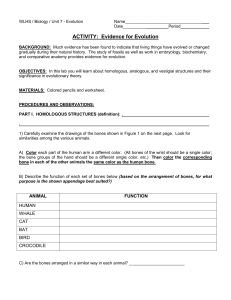
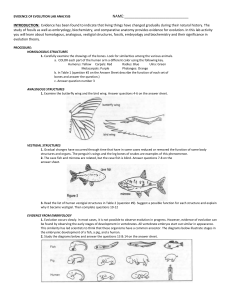
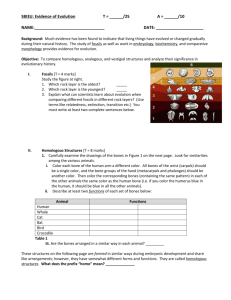
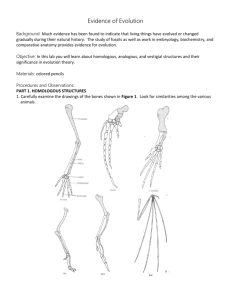

![Humerus [ ]Ulna [ ]Radius [ ]Carpals [ ]Metacarpals](http://s3.studylib.net/store/data/008199621_1-87ac69fffa28dec62383a91f39582f03-300x300.png)